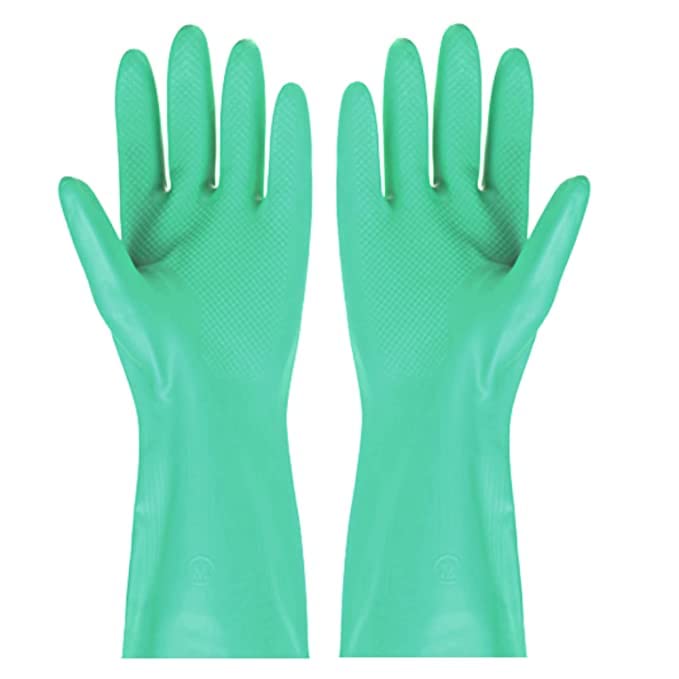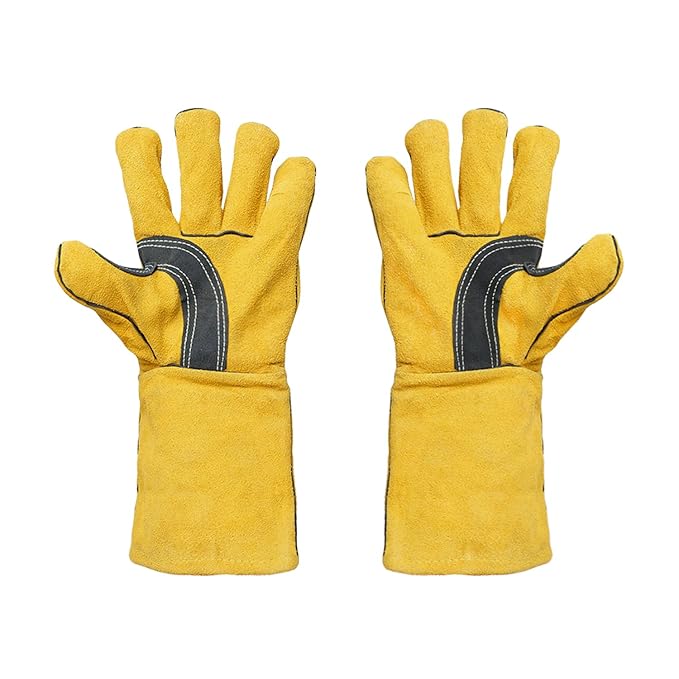Hand Protection: The Ultimate Guide to Safeguarding Your Hands at Work
Introduction to Hand Protection
Hand protection is one of the most critical aspects of workplace safety. Every day, workers are exposed to a variety of risks that could lead to hand injuries, from sharp objects and chemicals to heavy machinery and extreme temperatures. In fact, hands are among the most commonly injured body parts in various industries. For this reason, proper hand protection is crucial in preventing workplace accidents and ensuring that workers stay safe while performing their duties.
In this blog, we’ll discuss everything you need to know about hand protection, from the different types of hand protection gloves to the best practices for their use. We’ll also explore the importance of safety training and the role of safety officers in promoting hand safety in the workplace. With the right knowledge and safety practices in place, companies can reduce hand injuries and create a safer environment for everyone.
The Importance of Hand Protection
Hands are highly vulnerable in the workplace. Depending on the nature of the job, workers can face different risks, including cuts, burns, punctures, abrasions, and chemical exposures. According to the Bureau of Labor Statistics, hand injuries make up a significant portion of work-related accidents. These injuries can lead to lost productivity, costly medical treatments, and long-term disabilities.
Proper hand protection is essential not only for preventing these injuries but also for fostering a culture of safety in the workplace. Implementing a strong hand safety program can reduce accidents, improve worker morale, and minimize the financial impact of hand-related injuries on businesses.
Types of Hand Protection Gloves
Hand protection gloves come in a wide range of styles, materials, and designs, each suited to specific tasks and environments. The key to selecting the right glove for a job is to identify the hazards workers face and choose a glove that will offer the best protection. Let’s look at the most common types of hand protection gloves:
1. Cut-Resistant Gloves
Cut-resistant gloves are designed to protect workers from sharp objects like knives, glass, and metal edges. These gloves are typically made from materials like Kevlar, steel mesh, or fiberglass, which provide high levels of cut resistance. These gloves are ideal for workers in industries like construction, manufacturing, and food processing.
2. Chemical-Resistant Gloves
Chemical-resistant gloves are specifically designed to protect hands from hazardous chemicals, acids, oils, and solvents. These gloves are usually made from rubber, nitrile, or neoprene, materials that act as a barrier to harmful substances. They are commonly used in laboratories, cleaning, and industrial settings where workers handle potentially dangerous chemicals.
3. Impact-Resistant Gloves
Impact-resistant gloves are equipped with padding or other protective features to absorb impact and prevent injuries from heavy machinery or falling objects. These gloves are suitable for workers in industries like construction, automotive, and manufacturing, where there is a risk of hands being struck by hard objects.
4. Thermal Protective Gloves
Thermal protective gloves are made to protect workers from extreme temperatures, whether hot or cold. They are commonly used in environments like welding, steel production, and refrigeration. These gloves are made from heat-resistant materials such as leather, silicone, and aluminized fabrics, which provide excellent insulation against both heat and cold.
5. General Purpose Gloves
For tasks that don’t involve specific hazards, general-purpose gloves can provide adequate protection. These gloves are lightweight and flexible, offering basic protection against dirt, minor abrasions, and light chemicals. They are commonly used in warehouse operations, janitorial work, and basic maintenance tasks.
6. Disposable Gloves
Disposable gloves are typically made from latex, nitrile, or vinyl and are used for single-use purposes. These gloves are essential in settings like healthcare, food service, and janitorial services. While they don’t offer the same level of durability as other types, they are great for maintaining hygiene and preventing cross-contamination.
Key Considerations When Choosing Hand Protection
When selecting hand protection for workers, several factors should be considered to ensure maximum safety. Here are some of the most important considerations:
1. Type of Hazard
The first step in selecting the right glove is to assess the potential hazards in the workplace. Workers who handle sharp objects will need cut-resistant gloves, while those exposed to chemicals will require gloves made from materials that resist chemical penetration. Identifying the specific risks will help narrow down the glove options.
2. Glove Material
The material of the glove is crucial in determining its level of protection. For instance, nitrile gloves are commonly used for chemical resistance, while leather gloves are ideal for protection against abrasions and heat. Be sure to choose a material that is suited to the specific type of work being done.
3. Fit and Comfort
Gloves that are too tight or too loose can hinder a worker’s performance and cause discomfort. It’s important to select gloves that fit well and allow for dexterity, especially for tasks that require fine motor skills. Many manufacturers offer gloves in various sizes to ensure a proper fit.
4. Durability
The durability of a glove depends on the materials it is made from and the nature of the tasks being performed. Some jobs require gloves that can withstand wear and tear, while others may only need gloves for light, occasional use. Consider how long the gloves need to last in the workplace before making a selection.
5. Grip
For tasks that require handling tools or machinery, gloves with enhanced grip are essential. Look for gloves with textured palms or coatings that offer better traction. This will reduce the likelihood of accidents and improve productivity.
6. Compliance with Standards
Ensure that the gloves you choose comply with industry standards and regulations. The American National Standards Institute (ANSI) and the Occupational Safety and Health Administration (OSHA) set guidelines for hand protection, which can help ensure that gloves meet minimum safety requirements.
Best Practices for Using Hand Protection
Merely providing workers with hand protection gloves is not enough to prevent injuries. Proper training and usage are essential to ensure the gloves are effective in mitigating risks. Here are some best practices to follow when it comes to hand protection:
1. Training Employees
Educating employees about the importance of hand protection and how to use gloves correctly is key to preventing injuries. Ensure that workers understand the specific hazards they may face and the type of gloves that will provide adequate protection. Training should also cover how to properly wear, maintain, and dispose of gloves.
2. Inspecting Gloves Regularly
Gloves should be inspected before every use to ensure they are free from damage. Check for tears, punctures, or signs of wear that could compromise the glove’s protective capabilities. If gloves are damaged, they should be replaced immediately to maintain safety standards.
3. Using the Right Glove for the Job
Ensure that workers are wearing the appropriate gloves for the task at hand. Using the wrong type of glove can increase the risk of injury. For instance, using a leather glove when handling chemicals may lead to chemical exposure, while using a nitrile glove for heavy machinery work could result in poor protection against impact.
4. Maintaining Hygiene
For industries like healthcare and food service, maintaining proper hygiene is crucial. Disposable gloves should be used as needed and discarded after each use. Reusable gloves should be cleaned and sanitized regularly to prevent contamination.
5. Providing Adequate Glove Storage
Gloves should be stored properly to maintain their integrity. Keep gloves in a clean, dry place away from sunlight and chemicals that could degrade the material. Proper storage can extend the lifespan of gloves and ensure they are ready for use when needed.
Hand Protection in Specific Industries
Hand protection is essential in nearly every industry, but the specific requirements may vary depending on the type of work being performed. Here’s a look at how different industries approach hand safety:
1. Construction Industry
In the construction industry, workers are often exposed to risks like cuts, abrasions, impact, and chemical exposure. Cut-resistant gloves, impact-resistant gloves, and thermal protective gloves are commonly used in this field. Proper hand protection can help prevent injuries from sharp tools, falling debris, and extreme temperatures.
2. Healthcare Industry
Healthcare workers are at risk of coming into contact with bloodborne pathogens, chemicals, and sharp instruments. Disposable gloves made from latex, nitrile, or vinyl are typically used to prevent contamination and cross-contamination. Healthcare workers should be trained on proper glove usage and hygiene practices to maintain a safe environment.
3. Manufacturing and Automotive Industries
Workers in manufacturing and automotive industries often handle heavy machinery, sharp tools, and hazardous chemicals. Impact-resistant gloves, cut-resistant gloves, and chemical-resistant gloves are essential to protect against these hazards. In addition, proper training and regular glove inspections are necessary to ensure worker safety.
4. Food Industry
In the food industry, workers are exposed to potential cuts, burns, and chemical exposure. Food-grade gloves, which are typically disposable, should be used to prevent contamination. It’s essential to follow proper hygiene practices, including changing gloves between tasks and washing hands regularly.
Conclusion
Hand protection is a vital part of workplace safety that should never be overlooked. By understanding the types of gloves available, choosing the appropriate gloves for each job, and ensuring proper usage and maintenance, workers can reduce the risk of hand injuries and stay safe on the job. Safety officers play a crucial role in promoting hand protection and ensuring that safety protocols are followed. Ultimately, investing in the right hand protection not only safeguards workers’ health but also promotes a culture of safety that can benefit the entire organization.
By prioritizing hand safety and equipping employees with the necessary tools and knowledge, companies can minimize injuries, improve productivity, and foster a safer work environment. Hand protection is an investment in both the workforce and the overall success of the business.
“Start Your Website Journey Today – Exclusive Hostinger Discounts!”














